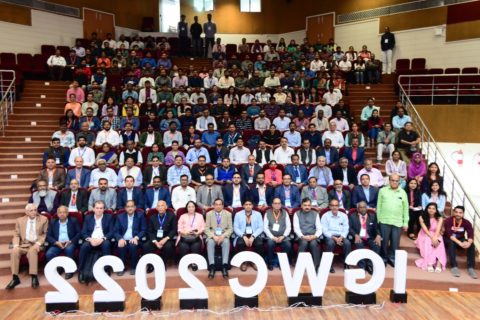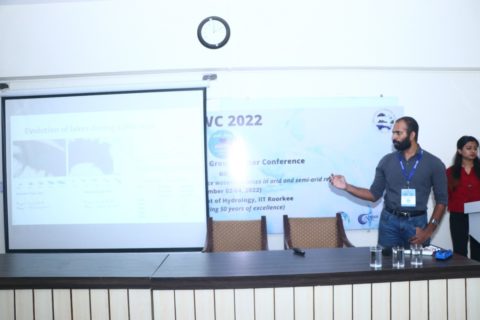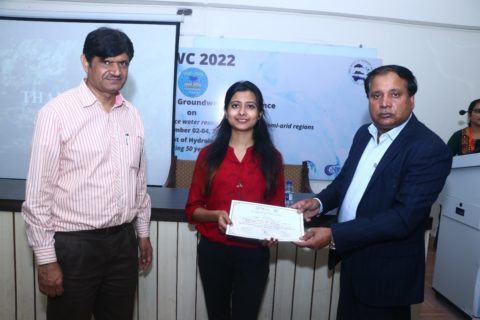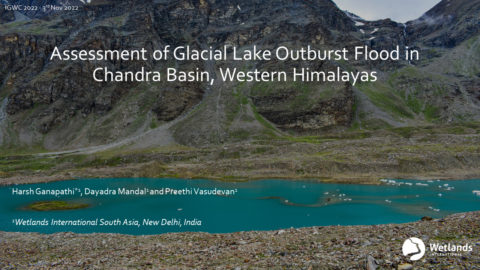
Assessment of glacial lake outburst flood presented at the International Ground Water Conference, 2022, IIT Roorkee
-
Capacity development
-
Climate and disaster risks

(Participants at the 9th International Ground Water Conference, 2022 at IIT Roorkee )
Holding the world’s third largest amount of glacier ice after Antarctica and Arctic, the Himalayas are referred as the third pole. Alarmingly, glaciers in many parts of the Himalayas are thinning and retreating as a result of global warming and climate change. These melted glaciers result in formation of lakes between the frontal moraine and the retreated glacier. These lakes are often dammed by unstable moraine and have a propensity to breach and cause destruction in the downstream valleys.

(Harsh Ganapathi presenting the work at the technical session on glacial hydrology)
With this context Mr. Harsh Ganapathi (Senior Technical Officer – Ecohydrology), Ms. Dayadra Mandal (Junior Technical Officer – Water Management) and Preethi Vasudevan (Junior Technical Officer – Water Management) from Wetlands International South Asia presented a research work titled “Assessment of glacial lake outburst flood in Chandra Basin, Western Himalaya” at the 9th International Ground Water Conference, 2022 at IIT Roorkee during November 2-4,2022 on “Effective management of (sub) – surface water resources in arid and semi-arid regions”. It is a study report of the Chandra basin of the Lahul-Spiti region of Himachal Pradesh. A glacial lake outburst flood scenario was simulated for the two prominent proglacial lake Samudra Tapu and Geepung Gath of the basin and its impacts on the key landuse and landcover was assessed.

(Ms. Dayadra Mandal (Junior Technical Officer – Water Management) with Wetlands International South Asia receiving certificate of appreciation for the work presented)
The conference was organised by the Department of hydrology, IIT Roorkee along with the collaboration of the association of Global Groundwater Scientists (AGGS), the International Society for Porous Media (InterPore) and Association of Geologist and hydrologists (GEOFORM). The aim of the conference was to focuses on research development based on the preservation of the soil-water resource that are taking place around the globe. The conference provided a platform for the research papers, case studies, success stories, and reviews under 18 thematic categories like watershed management, glacial hydrology, soil water pollution, GIS and remote sensing applications in hydrological and hydrogeological studies among others.

